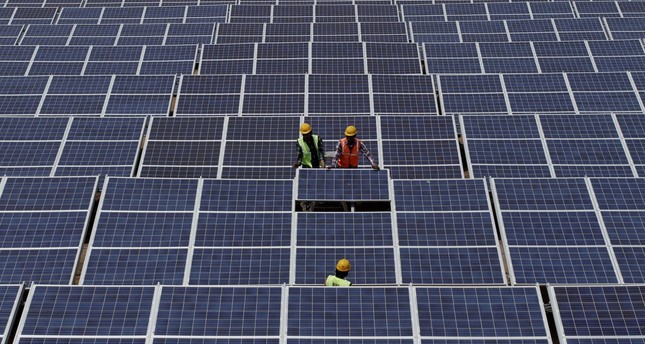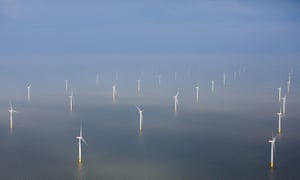Offshore wind innovation and the
corresponding patent filings have seen a significant uptick in the past
seven years after a slow start back in 1990. The acute focus of
innovations on CapEx and OpEx reduction has resulted in a significant
number of important developments in the areas of foundations,
construction techniques, vessels as well as service business models.
As the offshore wind industry begins to
see a state of maturity and normalcy with annual capacity additions,
there is a need to see further innovations in annual energy production
(AEP) enhancement. The next generation of component developments which
are already in the innovation pipeline will likely enable another step
change in the levelized cost of energy (LCOE) but will level out over
the next 10 years as we max out the technology maturity scale.
As floating foundations and tension  leg
platforms (TLPs) become the norm, new vessels with increased capacity
and flexibility are christened, and turbine power ratings and rotor
diameters reach new peaks, the next 10 years are likely to see a 21%
CapEx reduction and 37% OpEx reduction from average 2016 levels.
leg
platforms (TLPs) become the norm, new vessels with increased capacity
and flexibility are christened, and turbine power ratings and rotor
diameters reach new peaks, the next 10 years are likely to see a 21%
CapEx reduction and 37% OpEx reduction from average 2016 levels.
But in the past 27 years, there have
been only a few innovations focused on AEP enhancement other than new
turbine models with increased capacity. This has resulted in average
LCOE reductions of over 46% since 2000 alone, but the offshore wind
sector has been overly focused on innovations directed towards CapEx and
OpEx reduction at the expense of AEP enhancement.
As of the end of 2016, MingYang leads in
offshore wind innovation, but the company is solely focused on the
Chinese market with 100% of their patents filed there. More than 67% of
their patented innovations are focused on jacket and tripod foundations,
with very few of their patented innovations moving beyond low-rate
production at this stage.
A combination of Siemens and Gamesa,
including the Adwen technology, because they are a wholly owned Gamesa
subsidiary, comes in at #2, and could rightly achieve #1 status before
the end of 2017. They have a good distribution of technology development
and more than 36% of their innovations are being implemented for
commercial use.
Guodian United Power takes the #3 spot ahead of MHI Vestas Offshore Wind (MVOW) who has assumed a portion of the innovation portfolio of Mitsubishi as a result of the joint venture (JV). GE Renewable Energy comes in at #5 with an innovation portfolio that mainly comprises the acquisition spoils from Alstom. Envision Energy arrives on the list at #6 due to their two-bladed prototype development in Denmark, but with only a modest handful of offshore innovations beyond that typhoon-class turbine.
Mitsubishi Heavy Industries still
retains a rather sizable innovation portfolio making them #7 overall,
due to their ongoing developments of the hydrostatic drivetrain and
their domestic pursuits in Japan. They have kept in reserve a number of
key patents on offshore foundation technology which were not transferred
to the MHI Vestas JV, but for which MVOW does retain a license.
Sinovel comes in at #8 but their pace of
patent filings has also slowed substantially since 2014 mainly due to
the limiting of most of their discretionary budget spend after the AMSC
litigations as well as a domestic market slowdown. Senvion lands at #9
overall, with an innovation portfolio that has some breadth but is
nevertheless scaled in accordance with their overall commercial market
share. Goldwind rounds out the top 10, but just like Ming Yang, their
innovation portfolio is solely focused on the Chinese market and
comprises no high-value intellectual property (IP) at this time.
Europe is leading China and the U.S. in
offshore wind innovation development, but China is likely to see a
significant increase and firmly hold #1 after 2017 as their offshore
market is only in its infancy. The pace of innovation did slow thanks to
the 2012-13 global wind market dip, but the results indicate a positive
trend for 2016 and beyond which will be confirmed once all the patent
filings are made public.
Globally, the entire offshore wind
industry has spent U.S.$49.5M to date on patent protection, with an
average CAGR of 30% in the past 12 years. Expenditure on IP protection
by companies on the offshore wind industry is expected to escalate, with
U.S.$100M to be spent by 2021 and U.S.$200M by 2025 with an average
CAGR of 16% during that time-frame.
Annual expenditure has leveled off at
only U.S.$6.7M per annum in 2016 after having enjoyed an average of 30%
up until the market drop in 2013. Beginning in 2017, we anticipate the
market will resume the R&D and corresponding IP investments with
double-digit growth until another plateau around 2022 due to global
market penetration of offshore wind technology.
While the turbine OEMs in offshore have
seen some significant consolidation in the past few years, the disparity
between ownership of high-value intellectual capital of the offshore
wind OEMs and the rest of the value chain is likely to create M&A
opportunities. Foundation suppliers are likely to become the biggest
target of the offshore turbine OEMs as developers look for turnkey
solutions. OEMs will want to retain control of valuable and commercially
viable IP on floating foundations and TLPs.
source: http://www.windpowerengineering.com








